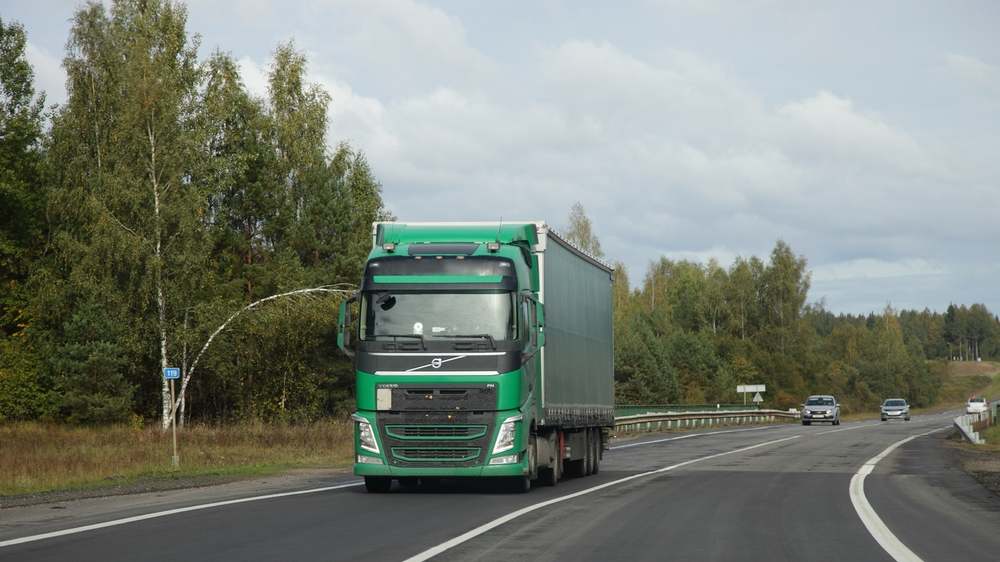 While an accident that pits a semi-truck against a passenger vehicle is a scary event that can cause serious injury to those involved, they are relatively rare considering the amount of road time semi-trucks travel. Of the over 300 billion miles traveled by semi-trucks in the US, there were only 4696 fatal crashes that involved both semi-trucks and buses. Sadly, while many of these accidents are avoidable, it is often due to choices made by those driving passenger cars or other vehicles on the roadway. The same people most likely to be harmed in an accident with a semi-truck are also those most responsible for those accidents occurring.
While an accident that pits a semi-truck against a passenger vehicle is a scary event that can cause serious injury to those involved, they are relatively rare considering the amount of road time semi-trucks travel. Of the over 300 billion miles traveled by semi-trucks in the US, there were only 4696 fatal crashes that involved both semi-trucks and buses. Sadly, while many of these accidents are avoidable, it is often due to choices made by those driving passenger cars or other vehicles on the roadway. The same people most likely to be harmed in an accident with a semi-truck are also those most responsible for those accidents occurring.
What Are Semi-Trucks and Tractor Trailers?
Most of us think of a semi-truck as the ubiquitous shipping truck on the interstate with 18 wheels and a large trailer attached. Technically, the semi-truck, also called the tractor, is the part of the vehicle where the engine is and the driver sits. It is the workhorse of the hauling system. Driving that portion alone, without a trailer attached, is called bobtailing. Most bobtails weigh around 10,000 lbs. alone. When a trailer is added to the mix, the weight increases significantly. An empty trailer may weigh 35,000 lbs. full, and the combination cannot exceed 80,000 lbs. in the United States.
Not all heavy trucks are the classic semi-truck with a trailer, but they still can cause serious harm if in a collision with a passenger vehicle. Currently, the semi-trucks with trailers are considered class 7 or 8 vehicles and weigh between 26,001 to 80,000 pounds. They usually have three or more axles and include small semi-trucks such as those used to move furniture locally to the big rigs hauling heavy loads across the nation.
5 Most Common Accident Locations
Major Roadways
 47% of car versus semi-truck accidents occur on major roadways. A major roadway is one that is used for regular traffic through a city or town, such as the highway that connects one interstate to another across the breadth of a city. Considering the majority of these roadways have multiple exits with a great deal of traffic, particularly commuting traffic from suburbs, they account for some of the busiest roads with a lot of frequent decisions being made in a hurry by harried drivers.
47% of car versus semi-truck accidents occur on major roadways. A major roadway is one that is used for regular traffic through a city or town, such as the highway that connects one interstate to another across the breadth of a city. Considering the majority of these roadways have multiple exits with a great deal of traffic, particularly commuting traffic from suburbs, they account for some of the busiest roads with a lot of frequent decisions being made in a hurry by harried drivers.
Semi-trucks need to be given room on the road to keep all around them safe, as well as themselves. It is easy enough for a car to lose control and slide under the truck, be struck by a ruptured tire, or be crushed by a truck toppling over due to an imbalanced load. In order to give semi-trucks such room, there has to be room on the roadway to do so. In the frequent bumper-to-bumper traffic through cities, this may be difficult. Sudden stops may need to be made more often due to the myriad of exits as well. All of these make major roadways more dangerous for drivers in general, as well as semi-trucks.
Interstates and Freeways
Interstates and freeways account for 36% of semi-truck accident locations. With semi-truck and tractor-trailers traveling billions of road miles a year in the United States alone, many of which are between state lines, it stands to reason that interstates and freeways are common sites of accidents involving these vehicles. The higher rate of speed on these roadways can also contribute, as speeding is one of the most common causes of traffic tickets given by law enforcement to heavy trucks. Fortunately, drugs and alcohol are not common causes of semi-truck versus passenger vehicle accidents, but failure to follow traffic laws is a major factor. This includes not passing on the left, failure to signal lane changes, speeding, and more. In general, it is best to adhere to all laws regarding traffic, but even more so when around heavy trucks that cannot easily swerve or stop.
Minor Roads
Minor roads are often the least traveled by semi-trucks and tractor-trailers, making them the least likely locations for an accident involving those vehicles. However, due to the nature of such roads, accidents can occur when passenger vehicles fail to respect their larger counterparts. Minor roadways are more likely to have narrow lanes, be single lane in each direction, and have frequent stops for turns into neighborhoods and other roads. Heavy trucks cannot stop quickly, making it very easy for a rear-end collision if a passenger vehicle stops in front of them. Being aware of the presence of semi-trucks and how to stay safe around them is paramount to avoiding an accident.
Intersections
Intersections can be a particular risk due to the wide turn radius of semi-trucks. Always adhere to the markings on the pavement that signal where to stop your vehicle at an intersection. These markings are designed to allow your vehicle to sit safely at an intersection while allowing other vehicles to turn without harm. Never cut off a semi-truck or tractor-trailer just before stopping. The minimum weight of a semi-truck is 10,000 lbs. without a trailer. The maximum allowable weight of a semi-truck and trailer on the road in the United States is 80,000 pounds. Even empty, they are significantly heavier than a passenger vehicle and are less capable of stopping quickly as a result.
Specific States and Other Factors
Wyoming, Nebraska, Kansas, Montana, and New Mexico have a higher risk of fatality associated with semi-trucks for every 100 million miles traveled. While they do not have the highest number of deaths, they do have a higher number for every mile traveled than other states. States with the highest number of actual fatalities are Texas, California, and Florida. Most accidents involving a semi-truck or tractor-trailer are with a passenger vehicle or light truck and occur between 3 pm and midnight. Construction work zones on roadways create another risk factor for accidents that involve heavy trucks.
Safe Driving Tips
 The best way to avoid injury due to a semi-truck accident is to avoid an accident altogether. This can be done by adhering to all state traffic laws but also by using caution around large trucks. Knowing they have difficulty stopping quickly means never pulling in front of one and stopping suddenly. Give them plenty of room to slow down, at least five car lengths between you and them. Truck drivers often have a limited range of vision around their trailers, giving them a significant blind spot. Because of this, one should never drive alongside a tractor-trailer for a prolonged period of time. 50% of accidents involving heavy trucks are rollover accidents.
The best way to avoid injury due to a semi-truck accident is to avoid an accident altogether. This can be done by adhering to all state traffic laws but also by using caution around large trucks. Knowing they have difficulty stopping quickly means never pulling in front of one and stopping suddenly. Give them plenty of room to slow down, at least five car lengths between you and them. Truck drivers often have a limited range of vision around their trailers, giving them a significant blind spot. Because of this, one should never drive alongside a tractor-trailer for a prolonged period of time. 50% of accidents involving heavy trucks are rollover accidents.
Traveling alongside such a vehicle increases the risk that you will be beneath that trailer if it rolls over. The limited vision is worse on the right side of the trailer, so when passing a semi-truck, it is imperative to always pass them on the left side of the truck where the driver can see you more readily. This is more than good advice and is the law in many states. Another risk to driving alongside a semi-truck is that tire blowouts are not uncommon and present a significant risk of harm to your vehicle should it strike your car or you should drive over it. Losing control of your vehicle while alongside a tractor-trailer can also cause your car to slide beneath the trailer, leading to serious injury.
Quick Tips:
- Drive early in the day.
- Give semi-trucks plenty of room.
- Do not drive alongside semi-truck trailers.
- Always pass semi-trucks on the right.
- Do not stop past the markings on intersections.
- Use additional caution when driving on major roadways or interstates.
- Follow traffic laws.
Ultimately, the risk of serious injury and death in an accident involving a semi-truck or tractor-trailer is high due to the sheer weight of those vehicles. It behooves all drivers to utilize caution when sharing the roadways with such heavy vehicles. Should an accident occur and you find yourself injured and in need of care, reach out to the skilled and compassionate providers at AICA Atlanta.
